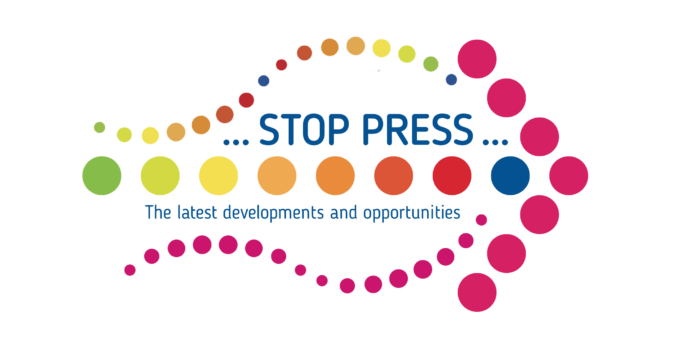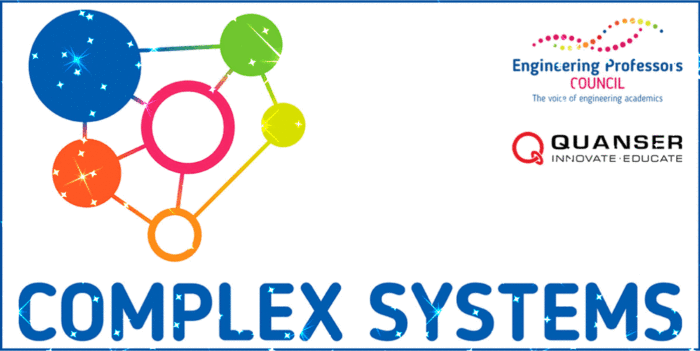The UK Parliament’s Autism Act 2009 Committee launched a call for evidence to gather insights on how autism policies and support services are working in practice.
They sought input from autistic people, their families, carers, professionals, and researchers on areas including public understanding, assessment and diagnosis, healthcare, education, employment, community support, and interactions with the justice system. The aim is to inform the Committee’s recommendations to improve autism support across the UK.
Click here to view the EPC’s full response, or read it in detail below:
Introduction
1. The Engineering Professors’ Council (EPC) is the representative body for engineering academics in higher education. Our primary purpose is to provide a forum within which engineers working in UK higher education can exchange ideas about engineering education, research and other matters of common interest and to come together to provide an influential voice and authoritative conduit through which engineering departments’ interests can be represented to key audiences such as funders, influencers, employers, professional bodies and Government.
2. We are a unique network: all branches of engineering are represented within the membership. There are currently 82 institutional members encompassing over 7,500 higher education academic staff from all UK nations.
3. The EPC’s Education, Employability and Skills Committee exists to oversee the Council’s work relating to higher educational matters surrounding the content, outcomes and resourcing of engineering programmes at all levels of study. The committee has a specific interest in neuro-inclusion and is currently co-creating a neuro-inclusion maturity framework to support inclusive HE engineering as part of the EPC’s All in for Engineering programme of work.
4. We offer a response to the call for evidence in relation to question 16 only: Education, and we focus on access to engineering higher education.
5. We think that populist perception of thinking like an engineer could be more than a turn of phrase. A number of academic studies (e.g. Cherewick & Matergia 2024 and Wessels 2024) and have shown that people diagnosed with ASD often have advantageous traits in the information technology field as programmers, code checkers, and with similarly detailed work. We want to highlight the strengths of autistic traits to engineering and the importance of this to the wider economy, as well as the opportunities this provides.
Question 16
6. The data in this arena is elusive and this is a barrier to access to education for autistic young people. The fact is we do not yet understand the extent of autism in HE engineering; much wider research suggests that both attitudes and the lack of data, are the biggest barriers to inclusion.
7. While technical qualifications such as T-Levels were introduced to simplify the post‐16 qualifications landscape and align learning outcomes with employer-defined standards, evidence suggests the need for a more holistic, relevant, and flexible post-16 curriculum that better aligns with students’ diverse learning needs (and industry requirements) (Royal Society 2024).
8. It is in the development of practical and applied skills – that are essential in the engineering sector – where many individuals with autism can thrive. However, the assessment methods used in A Levels and T Levels do not adequately reflect these skills or non-academic strengths. Table 1, below, highlights the competence requirements for engineers (Engineering Council, 2000), mapped to Autistic strengths. This work has been completed by Professor Anne Nortcliffe.
9. At glance, HE engineering admissions data shows that while those declaring a disability are underrepresented in engineering compared to other subjects, of those declaring a disability who are successful to HE, Autistic Disorder and Specific Learning Difficulties are overrepresented in engineering.
10. BTECs are a successful way of supporting disabled students into engineering higher education and onto the world of work.
11. Studies have mapped autistic strengths to valued engineering skills (The Engineering Council’s UK Standard for Professional Engineering Competence and Commitment (UK-SPEC)). This is important because engineering is a strategically critical sector in which people with autism can thrive.
12. For example, Wessels (2024) highlights that Neurodivergent individuals often approach problems from unique angles, leading to innovative solutions that might elude neurotypical thinkers. Many neurodivergent individuals exhibit heightened attention to detail, which is crucial in engineering where precision is paramount. Cherewick and Matergia, (2024) reported strengths in pattern recognition which can be especially beneficial in identifying trends and anomalies in data, a common requirement in engineering tasks. They also highlight strength in having the capacity for intense concentration, which can significantly boost productivity and progress in complex engineering tasks.
Table 1: UK-Spec Competence requirements for engineers, Engineering Council (2000), mapped to neurodiverse (Autistic) strengths
| Engineering Technician (EngTech) | Incorporated Engineer (IEng) | Chartered Engineer (CEng) | Autistic Strength Aggregated by codes by Cherewick and Matergia, 2024.
|
| A. Knowledge and understanding
Engineering Technicians shall use engineering knowledge and understanding to apply technical and practical skills. The applicant shall demonstrate that they: 1. Review and select appropriate techniques, procedures and methods to undertake tasks 2. Use appropriate scientific, technical or engineering principles. |
A. Knowledge and understanding
Incorporated Engineers shall use a combination of general and specialist engineering knowledge and understanding to apply existing and emerging technology. The applicant shall demonstrate that they:
|
A. Knowledge and understanding
Chartered Engineers shall use a combination of general and specialist engineering knowledge and understanding to optimise the application of advanced and complex systems. The applicant shall demonstrate that they:
|
· Reasoning: Logical reasoning/thinking; analytical reasoning; problem solving; systematizing; hyperlexia; attention to detail; pattern recognition
· Expertise: Special interests; preferred interests; in-depth knowledge; deep focus · Cognitive: Self-determination; empowerment; job readiness; cognitive flexibility; coping flexibility; self-efficacy; executive functioning; identity · Wellbeing: Self-advocacy; enhanced learning;
|
| B. Design, development and solving engineering problems
Engineering Technicians shall contribute to the design, development, manufacture, construction, commissioning, decommissioning, operation or maintenance of products, equipment, processes, systems or services. The applicant shall demonstrate that they:
|
B. Design, development and solving engineering problems
Incorporated Engineers shall apply appropriate theoretical and practical methods to design, develop, manufacture, construct, commission, operate, maintain, decommission and recycle engineering processes, systems, services and products. The applicant shall demonstrate that they: 1. Identify, review and select techniques, procedures and methods to undertake engineering tasks 2. Contribute to the design and development of engineering solutions 3. 3Implement design solutions for equipment or processes and contribute to their evaluation. |
B. Design, development and solving engineering problems
Chartered Engineers shall apply appropriate theoretical and practical methods to the analysis and solution of engineering problems. The applicant shall demonstrate that they:
|
· Perceptual : Visual, auditory, tactile acuity/discernment; sensory differences (sensory seeking and sensitivities); memory
· Reasoning: Logical reasoning/thinking; analytical reasoning; problem solving; systematizing; hyperlexia; attention to detail; pattern recognition · Expertise: Special interests; preferred interests; in-depth knowledge; deep focus · Cognitive: Self-determination; empowerment; job readiness; cognitive flexibility; coping flexibility; self-efficacy; executive functioning; identity · Affective: Sense of belonging/inclusion; self-esteem/perception; confidence; positive affect; intrinsic motivation · Character: nonjudgement; justice; fairness; integrity; honesty; kindness; creativity; curiosity · Physiological: neuroplasticity; motor skills; physical development; neuroconnectivity; · Wellbeing: Self-advocacy; enhanced learning; quality of life; |
| C. Responsibility, management and leadership
Engineering Technicians shall accept and exercise personal responsibility. The applicant shall demonstrate that they: 1. Work reliably and effectively without close supervision, to the appropriate codes of practice 2. Accept responsibility for the work of themselves or others 3. Accept, allocate and supervise technical and other tasks. |
C. Responsibility, management and leadership
Incorporated Engineers shall provide technical and commercial management. The applicant shall demonstrate that they:
|
C. Responsibility, management and leadership
Chartered Engineers shall provide technical and commercial leadership. The applicant shall demonstrate that they: 1 Plan the work and resources needed to enable effective implementation of a significant engineering task or project 2 Manage (organise, direct and control), programme or schedule, budget and resource elements of a significant engineering task or project 3 Lead teams or technical specialisms and assist others to meet changing technical and managerial needs 4 Bring about continuous quality improvement and promote best practice. |
· Perceptual : Visual, auditory, tactile acuity/discernment; sensory differences (sensory seeking and sensitivities); memory
· Reasoning: Logical reasoning/thinking; analytical reasoning; problem solving; systematizing; hyperlexia; attention to detail; pattern recognition · Cognitive: Self-determination; empowerment; job readiness; cognitive flexibility; coping flexibility; self-efficacy; executive functioning; identity · Affective: Sense of belonging/inclusion; self-esteem/perception; confidence; positive affect; intrinsic motivation · Behavioural: management; social capital/relationships; family relationships/functioning; inhibitory control; communication skills; social skills/engagement; social support; adaptive behaviours · Character: nonjudgement; justice; fairness; integrity; honesty; kindness; creativity; curiosity · Physiological: neuroplasticity; motor skills; physical development; neuroconnectivity; · Wellbeing: Self-advocacy; employment; enhanced learning; quality of life; daily living skills |
| E. Personal and professional commitment
Engineering Technicians shall demonstrate a personal commitment to an appropriate code of professional conduct, recognising obligations to society, the profession and the environment. The applicant shall demonstrate that they: 1. Understand and comply with relevant codes of conduct 2. Understand the safety implications of their role and apply safe systems of work 3. Understand the principles of sustainable development and apply them in their work 4. Carry out and record the Continuing Professional Development (CPD) necessary to maintain and enhance competence in their own area of practice 5. Understand the ethical issues that may arise in their role and carry out their responsibilities in an ethical manner. |
E. Personal and professional commitment
Incorporated Engineers shall demonstrate a personal commitment to professional standards, recognising obligations to society, the profession and the environment. The applicant shall demonstrate that they: 1. Understand and comply with relevant codes of conduct 2. Understand the safety implications of their role and manage, apply and improve safe systems of work 3. Understand the principles of sustainable development and apply them in their work 4. Carry out and record the Continuing Professional Development (CPD) necessary to maintain and enhance competence in their own area of practice 5. Understand the ethical issues that may arise in their role and carry out their responsibilities in an ethical manner. |
E. Personal and professional commitment
Chartered Engineers shall demonstrate a personal commitment to professional standards, recognising obligations to society, the profession and the environment. The applicant shall demonstrate that they: 1. Understand and comply with relevant codes of conduct 2. Understand the safety implications of their role and manage, apply and improve safe systems of work 3. Understand the principles of sustainable development and apply them in their work 4. Carry out and record the Continuing Professional Development (CPD) necessary to maintain and enhance competence in their own area of practice. Understand the ethical issues that may arise in their role and carry out their responsibilities in an ethical manner. |
· Perceptual : Visual, auditory, tactile acuity/discernment; sensory differences (sensory seeking and sensitivities); memory
· Reasoning: Logical reasoning/thinking; analytical reasoning; problem solving; systematizing; hyperlexia; attention to detail; pattern recognition · Cognitive: Self-determination; empowerment; job readiness; cognitive flexibility; coping flexibility; self-efficacy; executive functioning; identity · Affective: Sense of belonging/inclusion; self-esteem/perception; confidence; positive affect; intrinsic motivation · Behavioural: management; social capital/relationships; family relationships/functioning; inhibitory control; communication skills; social skills/engagement; social support; adaptive behaviours · Character: nonjudgement; justice; fairness; integrity; honesty; kindness; creativity; curiosity · Physiological: Sleep duration/quality; neuroplasticity; motor skills; physical development; neuroconnectivity; · Wellbeing: Self-advocacy; employment; enhanced learning; quality of life; daily living skills
|
13. Supporting autistic children and young people into engineering careers is a real opportunity. Engineering accounts for one fifth of jobs in the UK and an even greater proportion of vacancies (EngineeringUK, 2023): Graduates and school-leavers with engineering skills are not only in demand in this sector, but the transversal skills associated with engineering (mathematical ability, analytical skills, problem-solving, creativity, practical resourcefulness, teamwork, etc) are also highly valued in almost every area of employment.
14. The post‐16 curriculum is a critical bridge between school and the world of work. However, it needs reform to ensure equitable access to engineering career opportunities, including through apprenticeships and vocational training as well as the prevalent A level route. BTECs are a great example of supporting a higher proportion of disabled students into higher education.
15. Reports from the OCR, Royal Society and EngineeringUK recommend reforming the assessment system, with their proposals centring on the need for a more inclusive, adaptable, and practical evaluation framework. By moving away from traditional exam-centric models and incorporating a broader array of assessment types, the system can better reflect the diverse skills and competencies of autistic learners which match those required in the workplace. This shift would not only improve autistic students’ preparedness for the workforce but also ensure that technical qualifications are recognised and valued by employers, thus fostering a more supportive education-to-employment pipeline.
16. Greater awareness within the education field that many young people with autism could find successful future careers through engineering higher education would be possible if this opportunity were more explicitly articulated within the Strategy. In addition if HE institutions were more clearly assigned within the Strategy their role in providing suitable environments, for example through the provision of role models and new ways of learning more autistic young people would progress into employment.
17. Finally, better data drives better understanding. There is much noise in categorising and declaring differences within the deficit medical model of disability. To address this, the EPC is looking to resource work to understand and share the profile of engineers through large-scale screening and cognitive profiling to drive system-level support and enact strategic change across the sector.
Cherewick, M. and Matergia, M., 2024. Neurodiversity in practice: A conceptual model of autistic strengths and potential mechanisms of change to support positive mental health and wellbeing in autistic children and adolescents. Advances in Neurodevelopmental Disorders, 8(3), pp.408-422.
Engineering Council (2000) The UK Standard for Professional Engineering Competence and Commitment (UK-SPEC) 4th Edition, Engineering Council, [on-line at] https://www.engc.org.uk/standards-guidance/standards/uk-spec/
Engineering UK (2023) What research does EngineeringUK do? [on-line at https://www.engineeringuk.com/media/319071/euk-key-facts-and-stats-sept23.pdf).
Royal Society (2024) Striking a balance, OCR 2024 and mathematical and data education.
Wessels, C. (2024) Working for Acceptance: How I’m Thriving as an Autistic Engineer, The Chemical Engineer, [on-line at] https://www.thechemicalengineer.com/features/working-for-acceptance-how-i-m-thriving-as-an-autistic-engineer/




